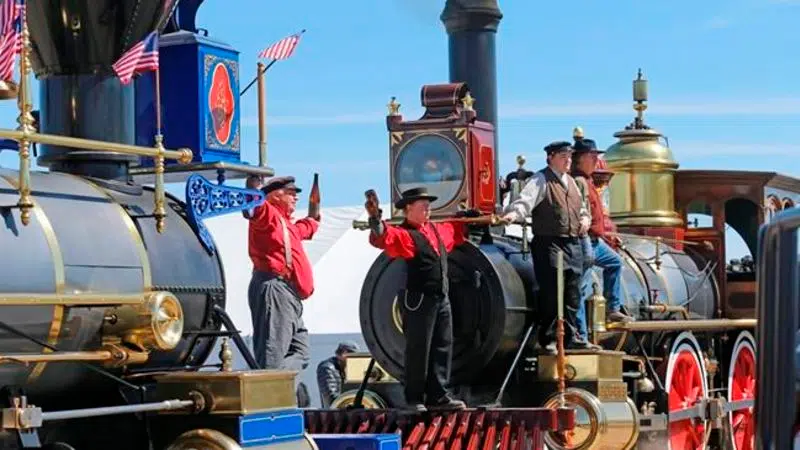
Utah event celebrates Transcontinental Railroad anniversary
PROMONTORY, Utah — Music, bells and cannon fire rang out Friday at a remote spot in the Utah desert where the final spikes of the Transcontinental Railroad were hammered 150 years ago, uniting a nation long separated by vast expanses of desert, mountains and forests and fresh off the Civil War.
An estimated 20,000 people swarmed to the celebration at Golden Spike National Historic Park northwest of Salt Lake City — the signature event of several days of festivities marking the railroad’s anniversary. Visitors came from as far as China, many decked out in old-fashioned dresses, top hats, bonnets and scarves.
The 1869 completion of the 1,800-mile (2,900 kilometre) rail line shortened cross-county travel from as long as six months in wagons and stagecoaches to about 10 days on the rails and served as a unifying moment for the nation. It became a pivotal moment in United States history that dramatically changed how people travelled and did business.


